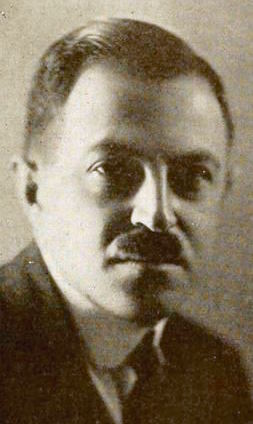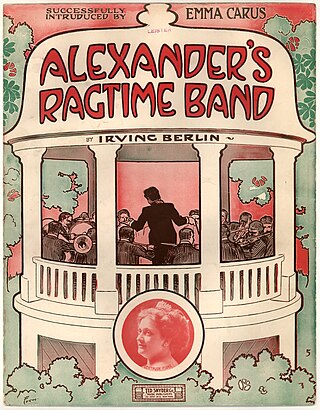Shootin' Stars is an animated cartoon short which was released to cinemas by Paramount Pictures in 1960. [1] In the same year, Paramount remade this cartoon for television as the Popeye episode Autographically Yours.
Shootin' Stars is an animated cartoon short which was released to cinemas by Paramount Pictures in 1960. [1] In the same year, Paramount remade this cartoon for television as the Popeye episode Autographically Yours.

Paramount Pictures Corporation, doing business as Paramount Pictures is an American film and television production and distribution company and the namesake subsidiary of Paramount Global. It is the sixth-oldest film studio in the world, the second-oldest film studio in the United States, and the sole member of the "Big Five" film studios located within the city limits of Los Angeles.

Terrytoons was an American animation studio in New Rochelle, New York, that produced animated cartoons for theatrical release from 1929 to 1973. Terrytoons was founded by Paul Terry, Frank Moser, and Joseph Coffman, and operated out of the "K" Building in downtown New Rochelle. The studio created many cartoon characters including Fanny Zilch, Mighty Mouse, Heckle and Jeckle, Gandy Goose, Sourpuss, Dinky Duck, Little Roquefort, the Terry Bears, Dimwit, and Luno; Terry's pre-existing character Farmer Al Falfa was also featured often in the series.

Fleischer Studios was an American animation studio founded in 1929 by brothers Max and Dave Fleischer, who ran the pioneering company from its inception until its acquisition by Paramount Pictures, the parent company and the distributor of its films. In its prime, Fleischer Studios was a premier producer of animated cartoons for theaters, with Walt Disney Productions being its chief competitor in the 1930s.

Max Fleischer was a Polish-American animator and studio owner. Born in Kraków, Poland, Fleischer immigrated to the United States where he became a pioneer in the development of the animated cartoon and served as the head of Fleischer Studios, which he co-founded with his younger brother Dave. He brought such comic characters as Koko the Clown, Betty Boop, Popeye, and Superman to the movie screen, and was responsible for several technological innovations, including the rotoscope, the "follow the bouncing ball" technique pioneered in the Ko-Ko Song Car-Tunes films, and the "stereoptical process". Film director Richard Fleischer was his son.

Betty Boop is an animated cartoon character designed by Grim Natwick at the request of Dave Fleischer. She originally appeared in the Talkartoon and Betty Boop film series, which were produced by Fleischer Studios and released by Paramount Pictures. She was featured in 90 theatrical cartoons between 1930 and 1939. She has also been featured in comic strips and mass merchandising.

Republic Pictures Corporation was an American film studio corporation that originally operated from 1935 to 1967, based in Los Angeles, California. It had production and distribution facilities in Studio City, as well as a movie ranch in Encino.

The Fleischer Superman cartoons are a series of seventeen animated superhero short films released in Technicolor by Paramount Pictures and based upon the comic book character Superman, making them his first animated appearance.
The Tornadoes were an American surf band from Redlands, California. They were the second band to receive national airplay with a surf instrumental, after The Marketts, with their song "Bustin' Surfboards", released on Aertaun Records in 1962. "Bustin' Surfboards" has since become a classic and mainstay of the surf genre. One of its distinctions, and appeals, was that the song opened with the sound of an ocean swell that continued throughout the song, thereby creating a sense of being at a beach. The album with the same name was belatedly released on September 20, 1963. The band, however, did not manage to follow up on their success. Their song "Shootin' Beavers" was banned from airplay because of its suggestive title. The band temporarily changed their name to The Hollywood Tornadoes, because the British band, The Tornados, were charting with the song "Telstar."

Screen Songs are a series of animated cartoons produced at the Fleischer Studios and distributed by Paramount Pictures between 1929 and 1938. Paramount brought back the sing-along cartoons in 1945, now in color, and released them regularly through 1951. Two of Paramount's one-shot cartoons quietly revived the format later: Candy Cabaret (1954) and Hobo's Holiday (1963).

Gabby is a short-lived Max Fleischer animated cartoon series distributed through Paramount Pictures. Gabby debuted as the town crier in the 1939 animated feature Gulliver’s Travels produced by Fleischer. Shortly afterward, Paramount and Fleischer gave Gabby his own Technicolor spinoff cartoon series, eight entries of which were produced between 1940 and 1941. Gabby was voiced by Pinto Colvig, the voice of Walt Disney's Goofy, and Grumpy and Sleepy from Snow White and the Seven Dwarfs.
The New Casper Cartoon Show is a 1963–1964 animated television series that appeared on ABC's Saturday morning schedule, based on the Harvey Comics cartoon character Casper the Friendly Ghost. Casper's co-stars included his friends from the Harvey Comics stories: Wendy the Good Little Witch, the Ghostly Trio, Spooky the Tuff Little Ghost, and the ghost horse Nightmare. The show premiered on October 5, 1963 and is one of the earliest Saturday morning cartoons.

Isadore Sparber was an American storyboard artist, writer, director and producer of animated films. He is best known for his work with Fleischer Studios and its successor, Famous Studios. When credited, his work appeared under varying versions of his name, including "Izzy Sparber," "I. Sparber," "Irving Sparber," and "Isidore Sparber" or "Isadore Sparber."
Adventure Cartoon Productions was a production company that created the cartoon series The Mighty Hercules in 1962. Distributed by Trans-Lux Television, the series then debuted on TV in 1963 and ran until 1966. Joe Oriolo, who produced the TV Felix the Cat series, and Roger Carlin, previously an associate of Jay Ward, were involved in the company; along with Arthur P. Brooks and the colorfully named "Big Sid" Ginsberg. The cartoons were made in New York City, and employed several veteran artists connected with Paramount Pictures and Terrytoons cartoons. The company used stock music by Winston Sharples derived from his scores for Paramount cartoons of the 1950s, also heard in many other New York-made cartoons of the time.

Shootin' for Love is a 1923 American silent Western film directed by Edward Sedgwick and featuring Hoot Gibson. Gibson plays a World War I veteran suffering from shell shock who at his father's ranch becomes involved in a dispute over water rights that leads to gunfire. The British Board of Film Censors, under its then-current guidelines, banned the film in 1923.
The Woody Woodpecker and Friends Classic Cartoon Collection: Volume 2 is a three-disc DVD collection of theatrical cartoons starring Woody Woodpecker and the other Lantz characters, produced by Walter Lantz Productions for Universal Pictures between 1932 and 1965. The set was released by Universal Studios Home Entertainment on April 15, 2008. Included in the set are seventy-five cartoon shorts, including the next forty-five Woody Woodpecker cartoons, continuing the production order from Volume 1. The other thirty cartoons include five Andy Panda shorts, five Chilly Willy shorts, five Oswald the Lucky Rabbit shorts, five Musical Favorites, and ten Cartune Classics.

Popeye the Sailor is an American animated series of short films based on the Popeye comic strip character created by E. C. Segar. In 1933, Max and Dave Fleischer's Fleischer Studios, based in New York City, adapted Segar's characters into a series of theatrical cartoon shorts for Paramount Pictures. The plotlines in the animated cartoons tended to be simpler than those presented in the comic strips, and the characters slightly different. A villain, usually Bluto, makes a move on Popeye's "sweetie", Olive Oyl. The villain clobbers Popeye until he eats spinach, giving him superhuman strength. Thus empowered, Popeye makes short work of the villain.
Volney White was an American animator and director active in the late 1930s and early 1940s. He worked at Romer Grey Pictures, Ltd which was launched in the spring of 1930, in Altadena, California, just north of Pasadena as studio supervisor.

Seasin's Greetinks! is a Popeye theatrical Christmas-themed cartoon short, starring William "Billy" Costello as Popeye and Bonnie Poe as Olive Oyl and William Pennell as Bluto. It was released on December 17, 1933 and is in the Popeye the Sailor series of theatrical cartoons released by Paramount Pictures.

Straight Shootin' is a 1927 American silent Western film directed by William Wyler. It is a silent five-reel Western released by Universal Pictures as part of their Blue Streak Series.

Jacob Benson Luden was an American film actor.